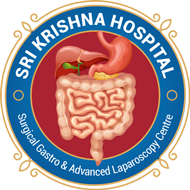What is Laparoscopic Sleeve Gastrectomy?
Sleeve gastrectomy, also called a vertical sleeve gastrectomy, is a surgical weight-loss procedure. This procedure is typically performed laparoscopically, which involves inserting small instruments through multiple small incisions in the upper abdomen. During sleeve gastrectomy, about 80% of the stomach is removed, leaving a tube-shaped stomach about the size and shape of a banana.Limiting the size of your stomach restricts the amount of food you are able to consume. In addition, the procedure prompts hormonal changes that assist with weight los
Why Laparoscopic Sleeve Gastrectomy is done?
Sleeve gastrectomy is a restrictive procedure. It greatly reduces the size of your stomach and limits the amount of food that can be eaten at one time. It does not cause decreased absorption of nutrients or bypass your intestines. After eating a small amount of food, you will feel full very quickly and continue to feel full for several hours.Sleeve gastrectomy may also cause a decrease in appetite. In addition to reducing the size of the stomach, sleeve gastrectomy may reduce the amount of "hunger hormone" produced by the stomach which may contribute to weight loss after this procedure.
Why it's done
Sleeve gastrectomy is done to help you lose excess weight and reduce your risk of potentially life-threatening weight-related health problems, including:
- Heart disease
- High blood pressure
- High cholesterol
- Obstructive sleep apnea
- Type 2 diabetes
- Stroke
- Cancer
- Infertility
How Laparoscopic Sleeve Gastrectomy is done ?
Involves making five or six small incisions in the abdomen and performing the procedure using a video camera (laparoscope) and long instruments that are placed through these small incisions. During the laparoscopic sleeve gastrectomy (LSG), about 75% of the stomach is removed leaving a narrow gastric “tube” or “sleeve”. No intestines are removed or bypassed during the sleeve gastrectomy. LSG surgery is done in a hospital under general anesthesia. This surgery takes out the part of your stomach that curves outward, called the fundus. After the fundus is taken out, close the rest of your stomach into a tube shape that looks like a banana or the sleeve of your shirt, hence the name "sleeve gastrectomy." Because you will have a much smaller stomach, you will fill up quickly at mealtimes and eat less.The fundus contains most of the area of your stomach that secretes a hormone called ghrelin. Because ghrelin may be partly responsible for making you feel hungry, taking out this part of your stomach may also help you lose weight afterward by decreasing your hunger.
What Are The Benefits Of Laparoscopic Sleeve Gastrectomy?
Depending on their pre-operative weight, patients can expect to lose between 40% to 70% of their excess body weight in the first year after surgery.
Many obesity-related comorbidities improve or resolve after bariatric surgery. Diabetes, hypertension, obstructive sleep apnea and abnormal cholesterol levels are improved or cured in more than 75% of patients undergoing Laparoscopic Sleeve Gastrectomy. The weight loss that occurs after Laparoscopic Sleeve Gastrectomy results in dramatic improvement in these medical conditions in the first year after surgery.





